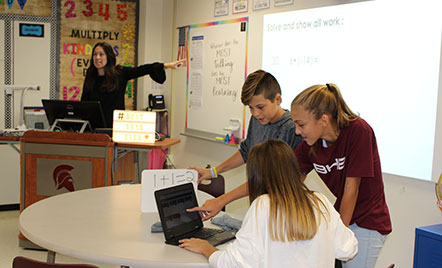
Residents to decide on 21st-century instructional & infrastructure upgrades, Oct. 23
Polls are open Oct. 23 from 7 a.m. to 9 p.m., High School Gym
Residents are being asked to go to the polls on Tuesday, Oct. 23 to vote on a proposed $34 million capital project. The proposal would continue the improvements begun with the voter-approved 2013 capital project by remaining focused on upgrading and modernizing the district’s aging facilities to meet today’s learning needs.
If approved, the proposal would result in a one-time estimated tax levy increase of 1.62 percent which would be phased in over five years, totaling $68. Much of the plan, approximately $24 million, would be funded through state building aid. The estimated local cost would be $9.17 million.
The proposal would fund 21 projects that the Board of Education has chosen as the district’s most urgent needs based upon studies and recommendations from two Capital Project Committees.
“We have made great progress in the past five years, but we have more work to do to transform our schools into 21st-century facilities,” says Superintendent Patrick McGrath. “This proposal, roughly the same size as the 2013 project, will finish major work that has been identified as necessary to bring our buildings and classrooms up to an appropriate 21st-century level for our students.”
In many ways this proposal is a continuation of the 2013 Building Our 2nd Century referendum, or part two of two, adds McGrath.
[PRINT-FRIENDLY VERSION OF CAPITAL PROJECT NEWSLETTER]
Project Highlights
The projects included in the Building Our 2nd Century II proposal are a continuation of improvements that began in 2013 and have been identified as the most important to ensure that our school facilities remain safe, in good working condition, and are able to meet 21st-century learning needs. They are categorized into four areas:
- Continuation of 21st-Century Learning Needs: $3.32 million
- O’Rourke Middle School Safety & Security and Classroom Improvements: $6.22 million
- High School Auditorium Renovation: $9.69 million
- Critical Infrastructure Improvements Districtwide, Including a New Transportation Building: $14.85 million
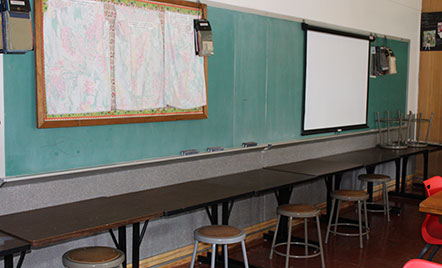
Continuation of 21st-Century Learning Needs
Estimated $3.32 million for districtwide improvements
Today’s students are growing up and learning in a fast-paced, digitized world. Gone are the days of small classrooms with desks neatly lined in rows facing a chalkboard. Students now have information at their fingertips, are able to share and receive news as it is breaking, and can connect with people all around the world. And, they can do all of this through a hand-held device.
The 21st-century has, indeed, changed the way students are taught and how teachers teach. To meet the changing needs of students, today’s teachers now must teach students how to access, sort, filter, and use the vast amount of information that could so easily inundate them. In order to do this, today’s classroom spaces and technology must allow students to collaborate, communicate, design, create, invent, solve problems, and think critically.
While the 2013 referendum included classroom upgrades in several areas throughout the district, there are still many more classrooms and instructional spaces districtwide that need to be updated to support the instructional needs of 21st-century learners. The proposal includes:
- Renovating and upgrading outdated classrooms for 21st-century learning throughout the district (new lighting, floors, ceilings; flexible work spaces; electrical upgrades; technology infrastructure improvements; etc.).
- Reconstructing and modernizing the original Business and Family & Consumer Science classrooms at the high school, which are some of the oldest, most outdated classrooms in the school. (See image, left.)
- Renovating and upgrading the Pashley Elementary School Library Media Center.
- Renovating and upgrading Stevens Elementary School Gymnasium and repairing the partition wall.
- Installing a running/athletic track at Pashley Elementary School to replace the
school’s current dirt track. (The Pashley PTA is donating $100,000 for the school’s new track. Therefore, no local tax impact is anticipated for this project.) - Replacing the cracked and damaged wall coverings and padding in the
middle school’s back gym. - Renovating and upgrading the Charlton Heights Elementary School Gymnasium.
- Resurfacing the cracked and deteriorated tennis courts at the high school.
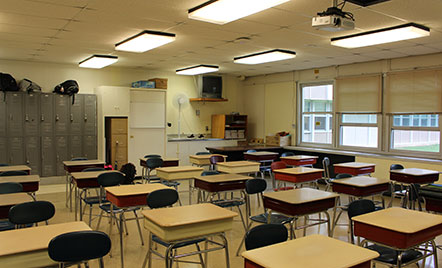
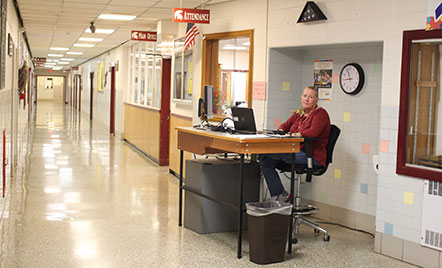
O’Rourke Middle School Safety & Security and Classroom Upgrades
Estimated $6.22 million in renovations and new space
Safety & Security Improvements
Within the past several years, there have been many changes to BH-BL schools’ physical safety and security features, such as the addition of secure vestibules, entryway cameras, swipe card entry systems, door alarms, and electronic door locks.
However, the current physical layout of the middle school entrance doesn’t allow for a proper secure entry vestibule like the other four BH-BL schools. This safety and security inadequacy would be addressed by:
- Constructing a new main entrance and lobby with a secure vestibule and upgraded locking system.
- Relocating the existing main office and guidance, social worker, nurse, and psychologist offices to renovated space closer to the new main entrance. (See floor plan below.)
- Renovating existing space for a conference room for parent meetings.
Classroom Improvements
- Relocating the makeshift special education rooms (currently in the space that will become the new entrance) to renovated and upgraded classrooms in the sixth-grade hallway.
- Renovating the current main office space into 21st-century classrooms with improved lighting; flexible work space; and upgraded infrastructure/wiring to support modern-day teaching and learning technology.
- Renovating and updating the existing technology classrooms (i.e., metal and wood shops) that are the original rooms from 1960.
- Renovating the technology wing to include a modern-day fabrication lab where students transform their designs into products.
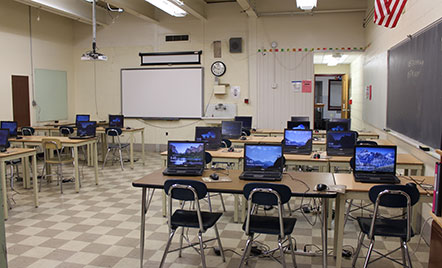
High School Auditorium Renovation Takes Center Stage in Proposal
Estimated $9.96 million for extensive upgrades & expansion within existing space
Built in 1955, the BH-BL High School auditorium has spent more than six decades being host to countless school and community drama productions (and rehearsals), musical performances for all five schools, districtwide talent shows, assemblies, opening day celebrations, meetings, community events and programs, award and induction ceremonies…and the list goes on and on.
The auditorium, in its heyday, was grand. But 63 years of wear and tear (with very few upgrades over the years) has left it in need of considerable upgrades and improvements.
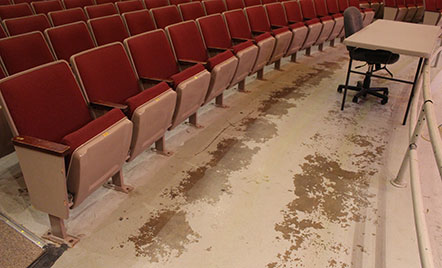
The current space becomes overcrowded (and overheated) during performances and is too small to even accommodate the high school’s student body.
“We are pushing maximum seating capacity at nearly all of our events,” explains Fine Arts Director Peter Giroux. “Over the years, this space has truly become a district- and community-wide auditorium, and it’s simply too small and outdated for how we use it and how much we use it.”
The auditorium also has outdated sound and lighting systems, poor acoustics, a flaking ceiling, and a cracked and splintering stage floor.
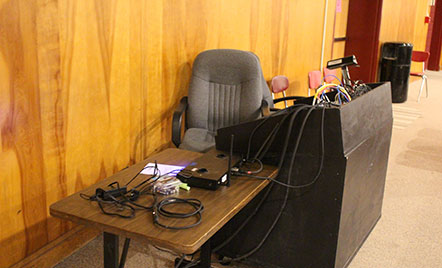
The HVAC system in the auditorium is inadequate and in constant need of repair. Facilities Director Dan Diggins explains the unit is so outdated that replacement parts are no longer being manufactured. He has to search online auction websites, such as eBay, in hopes of finding spare parts.
Renovation Plans
The auditorium is slated for a complete renovation and expansion, within its existing footprint, to transform it into a state-of-the-art performance space for students and the community. This includes:
- Constructing a balcony to increase audience seating by nearly 15 percent to approximately 1,000 seats.
- Installing air conditioning.
- Installing new seats, carpets, house lights, and ambient floor/aisle lights.
- Installing state-of-the-art audio and lighting systems.
- Constructing lighting and sound booths with cutting-edge technology to allow for live video streaming of concerts and productions.
- Installing a stage lighting gallery for better access to spotlights and other updated stage lighting features.
- Widening the stage opening for more usable stage space and greater visibility for the audience.
- Replacing the old stage curtain.
- Repairing the stage floor with more durable materials.
- Lengthening the orchestra pit by straightening the existing wall curve.
- Installing appropriate acoustical treatments.
- Heightening the fly space above the stage to allow for efficient scenery changes and set storage, and improving the quality and safety of the fly system (mechanism used to raise and lower stage scenery).

“I’ve spent the past 13 years watching my children and their friends perform in the high school auditorium. Some of my fondest memories were made in the auditorium. But, I also have memories of sitting in the audience with other parents as ceiling flakes scattered down on us. Or, at times, struggling to hear what is being said on stage. Our auditorium is the central hub of enjoyment for the entire community, which is why it would be beneficial to transform it into a state-of-the-art performance space while state building aid will fund a majority of the cost. After all, there are still so many students and their parents and grandparents and community members who have yet to make memories in our auditorium.” —Amy Aldrich, parent and Capital Project Committee Member
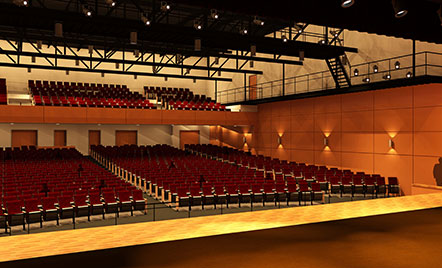
Districtwide Critical Infrastructure Needs, Including New Transportation Facility
Estimated $14.85 million in upgrades, repairs and new space
Just like a home, district buildings get constant wear and tear, both outdoors from the sun and snow and indoors from daily activities. Multiply that wear and tear a hundred times and you’ll have an idea of what happens to BH-BL’s five schools, which serve anywhere from 400 to 1,200 active students plus staff daily.

BH-BL’s buildings have become outdated in other ways too. People use more technology to learn, communicate, and share information so school infrastructure needs to keep pace as well.
The BH-BL tradition is to address these issues in five-year cycles—a process that began in 1983 as a way to identify, fix, and fund its most pressing infrastructure needs. The critical infrastructure improvements being proposed include:
- Replacing the oldest and most deteriorated areas of the district’s 11 acres of roofing.
- Renovating bathrooms in the worst condition in all five schools.
- Renovating the high school girls locker room showers.
- Replacing outdated kitchen equipment districtwide.
- Replacing insufficient HVAC units in the high school gym and chorus room, and adding air conditioning in the chorus room.
- Replacing classroom asbestos floor tiles and damaged ceilings districtwide.
- Improving classroom electrical access, installing more outlets.
- Replacing old water piping and valves, upgrading hot water units.
- Replacing the main electrical switch gear at the middle school.
- Reconfiguring Charlton Heights front parking lot to allow for safer student drop-off and pick-up zones and additional visitor parking.
New Transportation Facility
A large part of the proposed critical infrastructure needs is the construction of a new transportation building ($7.65 million). The existing facility was built in 1957 at a time when enrollment was one-third of what it is today and the district owned and serviced only 10 small buses. Today, the district maintains a 70-bus fleet to transport more than 3,100 students to and from school, field trips, athletic events, and more than two dozen other educational locations.
The transportation facility has a number of issues, including an insufficient number of service bays that are too narrow and short for today’s buses, deteriorating vehicle maintenance pits and floors, and limited storage.
“Right now we are looking at a building that is in danger of becoming inadequate for the maintenance of our fleet,” says Superintendent Patrick McGrath. “A recent study of our transportation service conducted by an outside agency shows that we offer family-friendly, safe, and efficient busing services to our families. We want to ensure we have the means to continue to do that.”
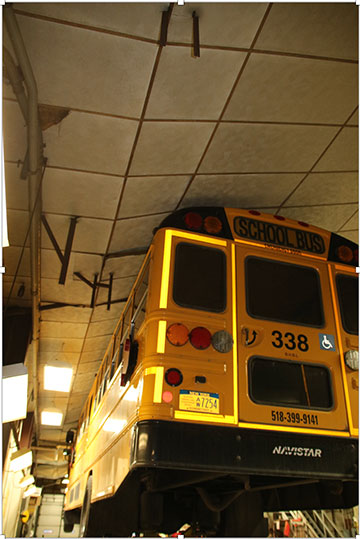
The new facility would be built on the current site and include six modern-day service bays with lifts, a training room for bus drivers, storage space for repair parts, and adequate space for the 107 members of the transportation department. The new building would also meet state and federal transportation regulations, which weren’t required in 1957.
“When the Capital Project Committee toured the garage, I was shocked to learn our buses do not properly fit in the service bays and that much of the maintenance work is being done on the pavement outside,” says James Ireland, a BH-BL parent and committee member. “This is really an inefficient way to work and impacts how quickly we get buses back on the road. Simply put, our 60-year-old bus garage does not provide the space or resources we need today. By investing in a new transportation facility, we are investing in the continued safety of our buses.”
If approved, the maintenance building at Pashley Elementary School would be relocated to the current transportation facility and additional parking would be added at Pashley.


